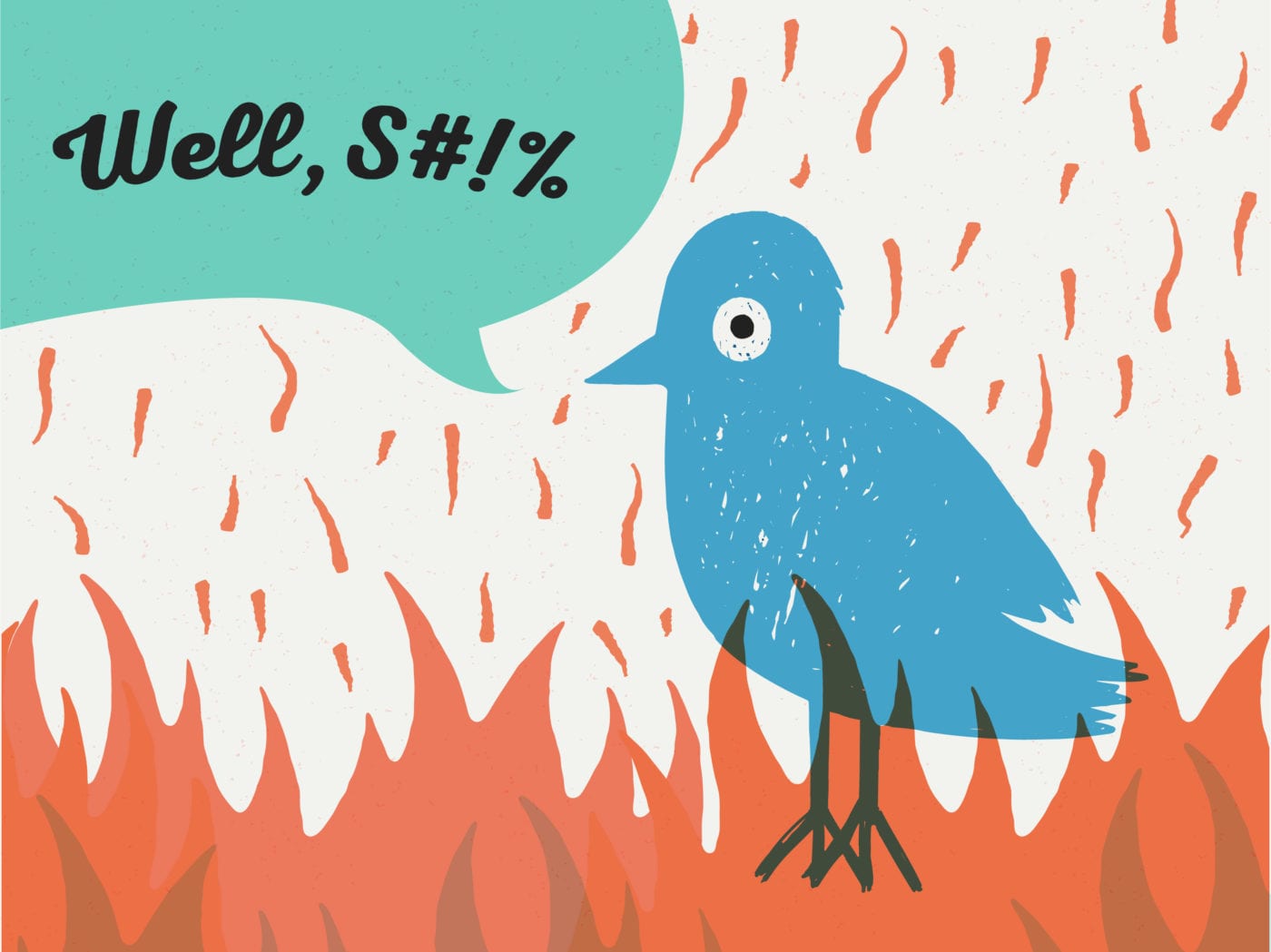Let’s cut to it: Twitter is a major social platform but, for a lot of businesses, it doesn’t work.
The thing is, Twitter is not the advertising juggernaut it was once perceived to be and with the trolling, influencers, and political back and forth–it’s not always the most hospitable place for a brand to be. Looking closer at Twitter’s performance over the past few years–as well as some of the controversies that have surrounded the platform–we can’t honestly recommend putting resources into it when there are so many other social sites worth using.
But don’t just take our word for it–let’s take a closer look at the reasons why we don’t love Twitter for all of our clients.
Why You *Should* Use Social Media
One of the principles of inbound marketing is to position yourself to be found online by your target audience. This doesn’t just mean using SEO and content marketing to make your site easier to find on search engines (although this strategy does play a big part). It also means figuring out where your audience is so that you can present your brand in a place where you’ll be found. Considering the fact that billions of people use social media, it should be a no-brainer that you should establish a social media presence.
Doing so can allow you to engage directly with your audience, allowing you to build relationships and trust. You can also use social media to increase brand authority (via your engagements as well as by posting content) and to increase brand awareness.
In general, social media is a critical part of your digital marketing strategy and should be part of how your brand thinks and speaks to its target audience.
Why You Should Avoid Using Twitter
Keeping the benefits of social media in mind, you might be wondering why Twitter wouldn’t be a valuable platform to be on. After all, looking at some of Twitter’s statistics, you would think that it must be one of the biggest platforms out there:
- Over 500 million tweets are posted every day.
- There are 1.3 billion users.
- Every month, more than 326 million people use Twitter.
- Around 75% of B2B businesses use Twitter.
With this kind of built-in audience and daily engagement, why wouldn’t you use Twitter? Well, there’s actually more to it than these stats would lead you to believe. If you look past the surface stats and in the context of the last few years, you’ll see that Twitter is actually on the decline. Just consider the following stats:
- Twitter has a user base of over a billion people, yet there are only 326 million monthly active users (and dropping). Not to mention that Twitter itself estimates that 23 million of their active users are bots.
- Millions of fake and spam accounts have been purged over 2018 alone leading to the loss of 9 million monthly active users. The purge is only going to continue as Twitter cracks down on fake accounts. While it’s a good thing that Twitter is doing this, it also means that its stats were inflated from the start. What good is a large user base if a large portion of said users is fake?
- Over the past few years, Twitter has been one of the driving forces of fake news. This has led to a lot of credibility issues. Consumers may not be as trusting of content posted via Twitter as they once were.
- Twitter’s engagement rate is not as good as it seems. While there are hundreds of millions of tweets every day, the average engagement rate is only 0.05%. Compare that to Instagram’s engagement rate, which is 3%. The whole point of Twitter is to be able to engage with your target audience–if it’s not effective for this, then what’s the point of using it?
Even if Twitter rights its ship, the future looks bleak: user growth is predicted to be less than one percent in the U.S. Only 500,000 Americans are expected to sign up to Twitter in 2019. Additionally, only 6% of U.S. teens believe Twitter is the most important social channel. If younger generations aren’t using Twitter, then you can’t expect your audience to grow.
Social media marketing is important. However, you need to be careful about where you put your resources. Twitter may seem like an effective social media platform on first glance, but if you look a little closer, the cracks are beginning to show. Twitter has addressed some of these issues, blaming them on bot purges as well as the new data privacy laws passed in Europe; however, the fact that these issues are to blame for Twitter’s declining performance should not instill confidence.
Twitter is a LOT of work…like…a lot
Twitter is a stream of consciousness platform and so carefully crafting your messaging to run once a day isn’t going to cut it. To make any kind of real headway on Twitter your brand needs to be mega active–like 8 – 24 tweets a day active. As one of our favorite old memes once said: “Ain’t nobody got time for that.” Even celebrities who live on Twitter delegate the majority of the community management on an assistant or intern. It’s a LOT to do.
Oftentimes, when we really sit and talk to a client about their social media goals–Twitter is a great venue for specific things:
- Event promotion
- Product release
- PR
- Outreach
All of these things can easily be blasted out on Twitter through sponsored Tweets on a larger publisher’s feed. Most brands just don’t have the Twitter following needed to make a promoted tweet on their own feed worthwhile. If you’re Taco Bell, Denny’s, or Oreo–obviously, this doesn’t apply to you…but if you’re not one of those businesses, consider more strategic ways you can use Twitter that doesn’t drain your bandwidth or your will to live.
Twitter TL;DR
There are so many different social channels out there that we simply cannot recommend using Twitter. Instagram, LinkedIn, and even Facebook, which certainly has had its share of controversies, are going to be much better options. When choosing what social platforms to use, identify what channels your target audience is actually using. Don’t just pour resources into what you think is the biggest social network.
-FINAL(01-00)-White&Blue-01.svg)





